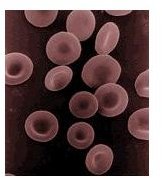Effects of the Beta Thalassemia Trait: A Closer Look at Cooley's Anemia and More
Types of Thalassemias
There are two types of thalassemias – alpha and beta. The terms simply refer to the part of the hemoglobin molecule that is affected. Hemoglobin is a protein that is made up of two different types of chains – alpha and beta. Defects in these chains can lead to problems with the formation, shape and size of red blood cells.
With hemoglobin production cut, there is less oxygen circulating in the bodies of people with beta thalassemia. Affected individuals may also have a shortage of red blood cells (anemia) which can lead to pale skin, fatigue and an increased risk of blood clots.
Beta Thalassemia Types
There are two types of beta thalassemia - thalassemia major (also known as Cooley’s anemia) and thalassemia intermedia. Of the two thalassemias, major is the most severe. The effects of this beta thalassemia trait usually manifest in the first two years of life and can include an enlarged spleen, liver and heart, bone deformities and jaundice. People who are severely affected will need frequent blood transfusions to replace lost red blood cells. This can lead to a buildup of iron in the body which can cause heart and liver failure.
Thalassemia intermedia is a milder form of the condition and usually reveals itself in early childhood, or even later on in life, and symptoms include bone deformities and mild to moderate anemia.
Genetic Mutations
The effects of beta thalassemia are caused by mutations in the HBB gene which is found on chromosome 11. HBB stands for “hemoglobin, beta” and it’s responsible for issuing the instructions to make the beta-globin protein. This is a vital sub-unit of the hemoglobin molecule.
More than 250 mutations of HBB are known to cause beta thalassemia. Although some of these mutations involve an insertion or deletion of a few nucleotides into the HBB gene, by far the most common type of mutation is a change in a single nucleotide within or close to the gene.
Genetic Effects
The genetic effects of these mutations are as follows: -
Some mutations will lead to a decrease in the amounts of beta-globin produced and others will actively prevent cells from producing the protein sheets. If there is not enough beta-globin sufficient quantities of hemoglobin cannot form, which results in less oxygen reaching the tissues and organs that need it.
Patterns of Inheritance
Beta thalassemia follows an autosomal recessive pattern of inheritance. This means that a child will only inherit the condition if it receives two copies of the abnormal gene – one from each parent. If one abnormal gene is passed on a child will be a carrier of the condition but will not experience its effects. However, some people who possess only one copy of the faulty gene can experience the milder form of beta thalassemia.
In a small percentage of cases the condition follows an autosomal dominant pattern of inheritance – that is only one copy of the faulty gene in each cell is sufficient to cause the condition.
References
- Wambua S, Mwangi TW, Kortok M, et al. (May 2006). “The effect of alpha+-thalassaemia on the incidence of malaria and other diseases in children living on the coast of Kenya”. PLoS Medicine 3 (5): e158.
-
HBB Gene: US National Library of Medicine
-
Picture credit - Drs. Noguchi, Rodgers, and Schechter of NIDDK.National Institutes of Health. As a work of the U.S. federal government, the image is in the public domain.
